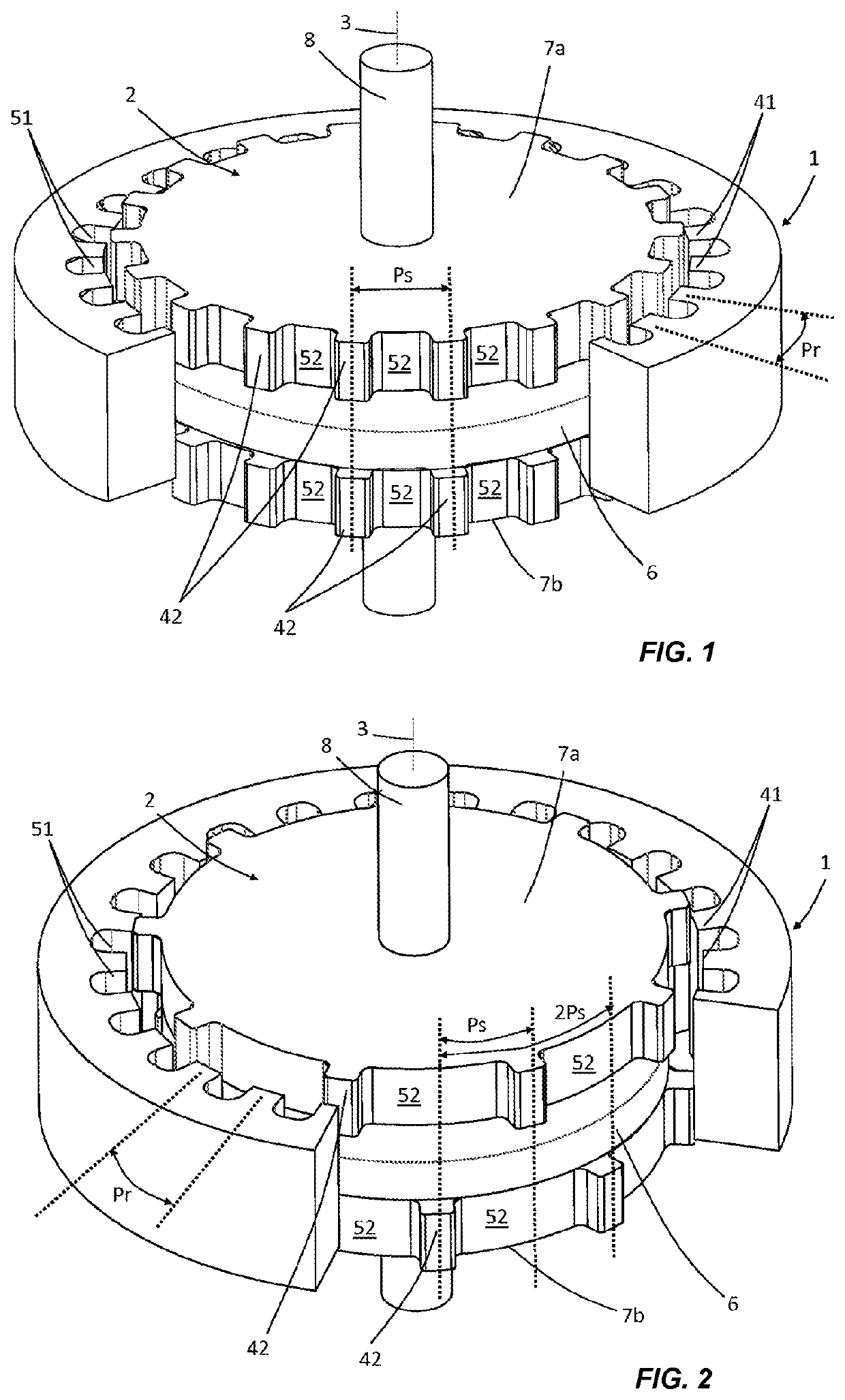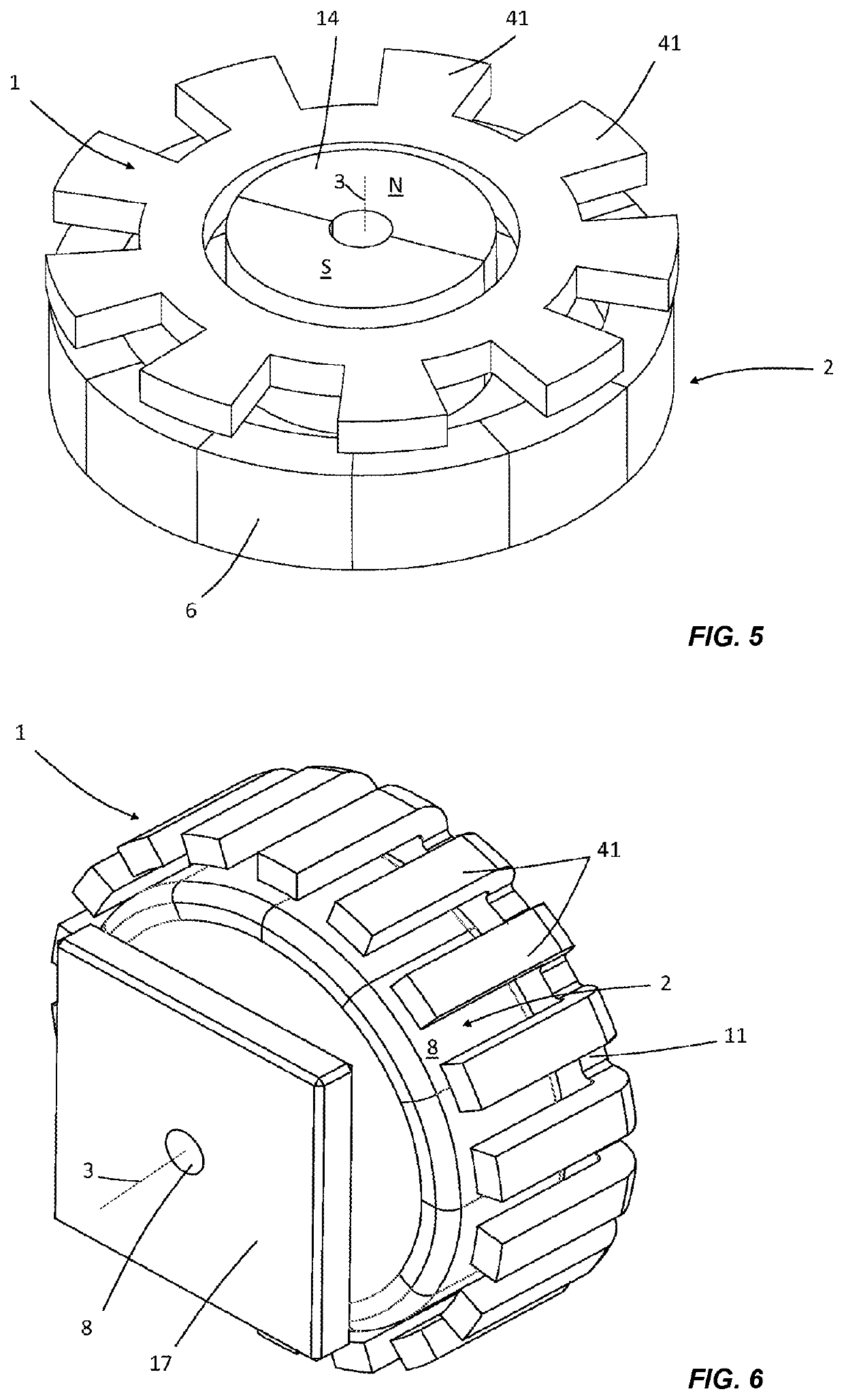Passive haptic interface
a haptic interface and passive technology, applied in the direction of mechanical control devices, instruments, manual control with single controlling member, etc., can solve the problems of poor torque/magnet volume ratio, torque loss, size limitation of miniaturization possibilities,
- Summary
- Abstract
- Description
- Claims
- Application Information
AI Technical Summary
Benefits of technology
Problems solved by technology
Method used
Image
Examples
Embodiment Construction
[0055]FIG. 1 shows a first embodiment of a rotary haptic interface according to the present disclosure. It comprises a first movable element (1) here in the form of a ring, the outer surface of which is cylindrical and may optionally be textured (not visible here) in order to improve the grip or digital actuation by a user. The inner surface of this movable element (1) has a succession of teeth (41), oriented radially relative to the axis (3) of rotation, and notches (51), defining a pole pitch Pr. This first movable element (1) is made from a soft ferromagnetic material, for example, a steel or an iron alloy. A second fixed element (2) is positioned inside this first movable element (1) and radially facing the first movable element (1). This second fixed element comprises a permanent magnet (6) in the form of a disc, the magnetization of which is directed axially. Positioned axially on either side of this magnet (6) are two ferromagnetic discs (7a, 7b) made from soft iron, each ext...
PUM
 Login to View More
Login to View More Abstract
Description
Claims
Application Information
 Login to View More
Login to View More - R&D
- Intellectual Property
- Life Sciences
- Materials
- Tech Scout
- Unparalleled Data Quality
- Higher Quality Content
- 60% Fewer Hallucinations
Browse by: Latest US Patents, China's latest patents, Technical Efficacy Thesaurus, Application Domain, Technology Topic, Popular Technical Reports.
© 2025 PatSnap. All rights reserved.Legal|Privacy policy|Modern Slavery Act Transparency Statement|Sitemap|About US| Contact US: help@patsnap.com



